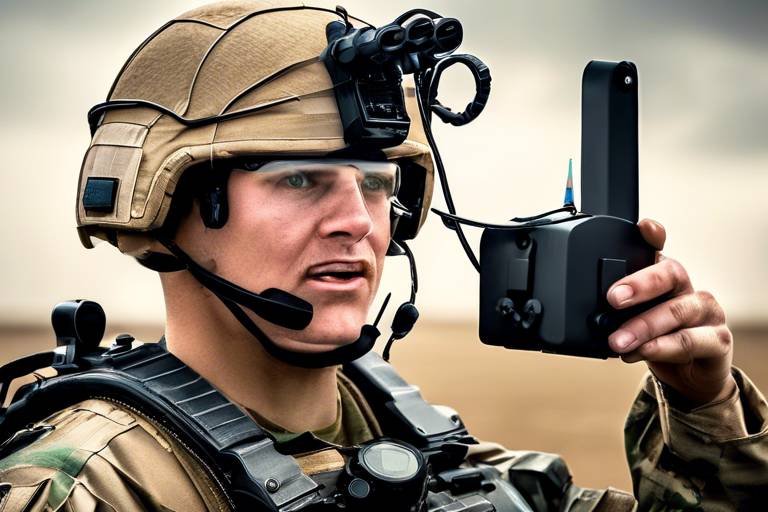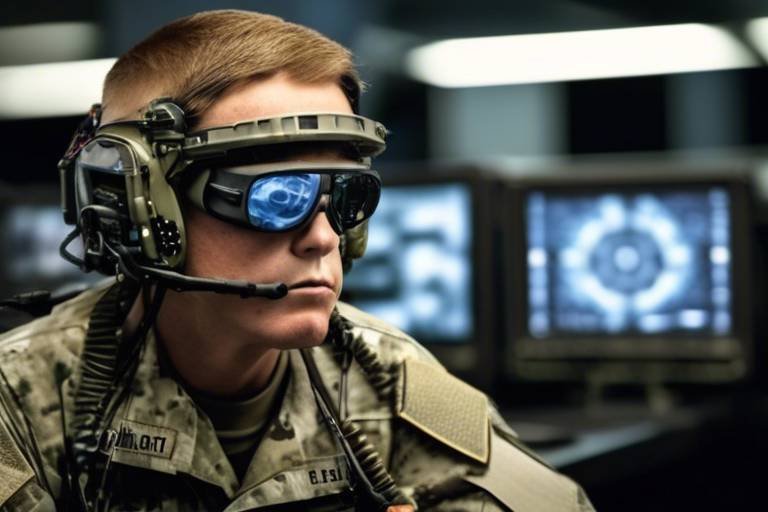Autonomous Search and Rescue Drones for Military Operations
The landscape of military operations is changing rapidly, and at the forefront of this transformation are autonomous search and rescue drones. These technological marvels are not just flying robots; they represent a leap into the future of military strategy and humanitarian aid. Imagine a scenario where a soldier is stranded in hostile territory. Instead of risking the lives of multiple personnel to perform a rescue, a drone equipped with advanced sensors and artificial intelligence can swoop in, assess the situation, and deliver assistance swiftly and safely. This is not science fiction; this is the reality of modern warfare and rescue missions.
To understand the impact of drones on military operations, we need to dive into the technological innovations that make them so effective. The integration of artificial intelligence (AI) into drones has been a game changer. AI allows drones to analyze data in real-time, making split-second decisions that can mean the difference between life and death. Additionally, improvements in navigation systems enable drones to operate in challenging environments, from dense urban areas to rugged terrains. These advancements ensure that drones can not only reach their destinations but also gather critical information along the way.
Utilizing drones in military search and rescue operations offers a plethora of operational advantages. For starters, they significantly reduce the risk to personnel. In high-stakes situations, sending a drone instead of soldiers can be the safer option. Drones can cover vast areas quickly, providing faster response times that are crucial during emergencies. Furthermore, they can access hard-to-reach locations that might be perilous for human rescuers. This capability allows for a broader search area and a higher chance of locating those in need.
One of the most compelling reasons for using drones in search and rescue missions is the risk reduction for personnel. Traditional rescue operations often involve teams braving dangerous conditions, whether it’s hostile enemy fire or treacherous terrain. Drones, however, can be deployed remotely, minimizing the exposure of military personnel to these threats. Consider this: if a drone can navigate a minefield or scout an enemy-occupied area without putting a single soldier at risk, wouldn’t it be a wise choice? The safety of our troops is paramount, and drones are proving to be invaluable assets in this regard.
Real-life case studies illustrate the effectiveness of drones in search and rescue operations. For example, during a recent military exercise, drones were used to locate and extract injured personnel from a simulated battlefield. The drones not only identified the location of the casualties but also delivered medical supplies, showcasing their dual functionality. Such missions highlight the potential of drones to save lives without endangering the rescuers.
Despite their advantages, the use of drones does present certain challenges regarding personnel safety. Issues such as technical malfunctions, signal interference, and the potential for enemy countermeasures can complicate operations. It's crucial for military strategists to develop protocols that address these risks, ensuring that drones enhance rather than hinder personnel safety. Regular maintenance, robust training, and contingency planning are essential components in mitigating these challenges.
Another remarkable feature of drones is their ability to provide enhanced situational awareness. Equipped with advanced sensors and cameras, drones can capture high-resolution images and video, delivering real-time data to command centers. This information is invaluable for making informed decisions during military operations. Imagine having eyes in the sky that can monitor troop movements, identify threats, and assess the battlefield conditions all at once. The ability to maintain a comprehensive view of the situation can greatly improve mission success rates.
The future of autonomous drones in military operations is indeed bright. Ongoing research and development are paving the way for exciting advancements. We can expect improvements in AI capabilities, which will allow drones to operate more autonomously. Additionally, enhancements in battery life will enable longer missions, while drone swarm technology could lead to coordinated operations involving multiple drones working together seamlessly. The possibilities are endless, and the military is poised to leverage these innovations for greater effectiveness.
The integration of drones with other military technologies, such as robotics and the Internet of Things (IoT), is transforming search and rescue operations. This collaboration enhances operational effectiveness by allowing drones to communicate with other devices, share data, and execute complex missions with higher precision. For instance, a drone could relay information to ground robots, enabling a coordinated effort to locate and assist stranded personnel.
While the deployment of autonomous drones in military operations offers numerous advantages, it also raises important ethical considerations. Questions about decision-making, accountability, and the potential for misuse are at the forefront of discussions surrounding drone technology. As we embrace these advancements, it’s crucial to establish guidelines that ensure drones are used responsibly, particularly in search and rescue missions where human lives are at stake.
- What are the primary benefits of using drones in military search and rescue? Drones reduce risks to personnel, provide faster response times, and can access difficult terrains.
- How do drones enhance situational awareness? Drones equipped with advanced sensors provide real-time data, improving decision-making during operations.
- What challenges do drones face in military operations? Technical malfunctions, signal interference, and potential enemy countermeasures can complicate drone operations.
- What is the future of drone technology in military applications? Future trends include improved AI capabilities, longer battery life, and drone swarm technology.
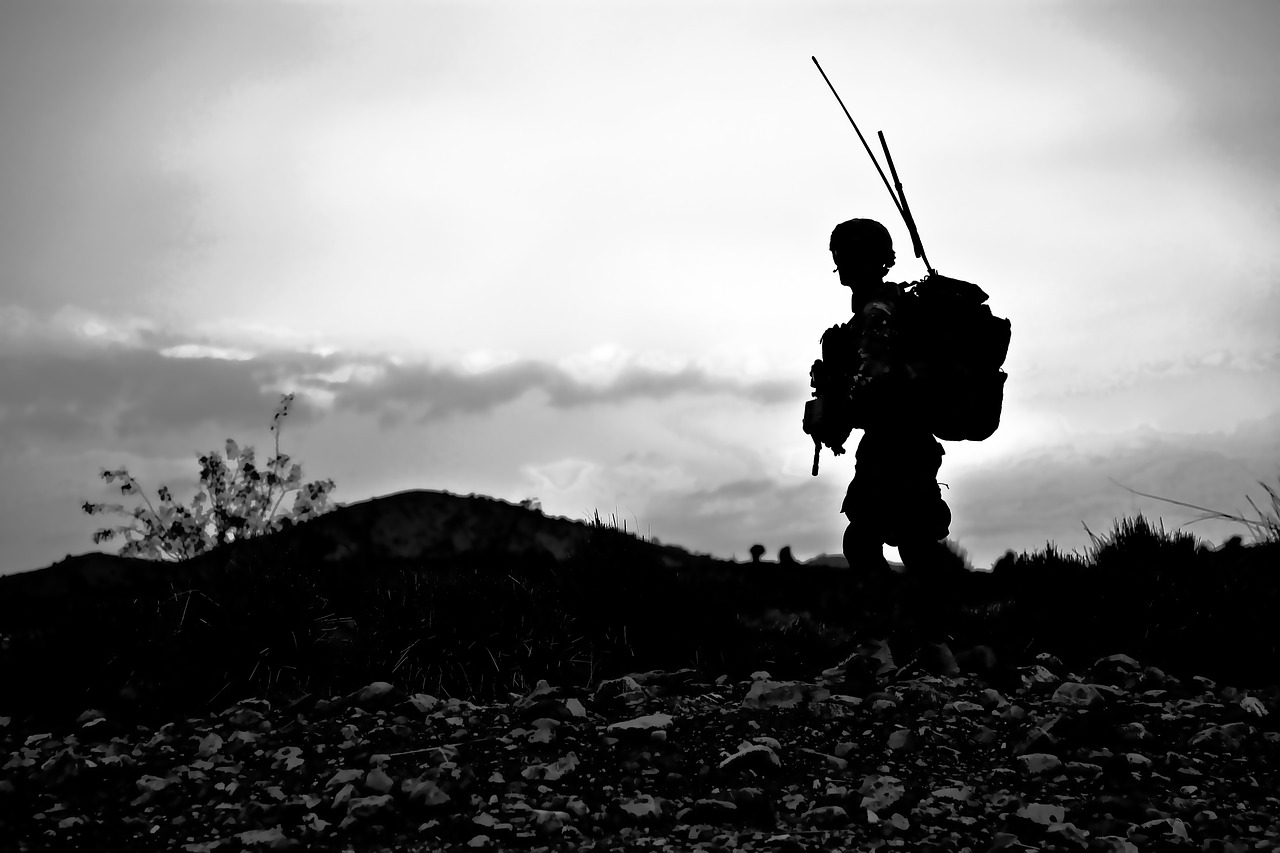
Technological Innovations in Drones
The world of military operations has witnessed a remarkable transformation, largely due to . These flying machines are no longer just remote-controlled toys; they have evolved into sophisticated tools equipped with cutting-edge technology that enhances their capabilities in search and rescue missions. One of the most significant advancements is the integration of artificial intelligence (AI), which allows drones to analyze vast amounts of data in real-time, making split-second decisions that can save lives.
Imagine a scenario where a soldier is trapped in a remote location. Traditional search and rescue methods may take hours, risking the soldier's life. However, with AI-powered drones, the response time can be drastically reduced. These drones can navigate complex terrains autonomously, utilizing advanced navigation systems that include GPS, LIDAR, and computer vision. This technology enables them to fly in adverse weather conditions and even in environments where GPS signals are weak or nonexistent.
Moreover, the incorporation of high-resolution cameras and thermal imaging sensors provides real-time surveillance capabilities. This means that operators can monitor situations from a safe distance, gaining crucial insights into the environment and any potential threats. For instance, during a rescue operation, a drone equipped with thermal imaging can detect body heat, allowing rescuers to locate individuals trapped under debris or lost in the wilderness.
Another exciting innovation is the development of swarm technology, where multiple drones work together as a cohesive unit. This is akin to a flock of birds maneuvering through the sky; they communicate and coordinate their movements to cover larger areas more efficiently. By deploying a swarm of drones, military forces can conduct extensive searches in a fraction of the time it would take a single drone or a team of personnel.
| Innovation | Description | Benefits |
|---|---|---|
| AI Integration | Allows drones to analyze data and make decisions autonomously. | Faster response times and increased operational efficiency. |
| Advanced Navigation | Utilizes GPS, LIDAR, and computer vision for precise movement. | Enhanced ability to navigate difficult terrains. |
| Real-time Surveillance | Equipped with high-resolution cameras and thermal sensors. | Improved situational awareness and target identification. |
| Swarm Technology | Multiple drones operate together to cover larger areas. | Increased search efficiency and speed. |
As we look to the future, the potential for further innovations in drone technology is limitless. Each advancement not only enhances the capabilities of military search and rescue operations but also significantly increases the safety of personnel involved. With the integration of these technologies, we are stepping into a new era of military operations where the risks associated with rescue missions can be minimized, and lives can be saved more effectively.
- What are the main advantages of using drones in military search and rescue?
Drones reduce the risk to personnel, provide faster response times, and can access hard-to-reach areas. - How does AI improve drone capabilities?
AI allows drones to make real-time decisions, analyze data quickly, and navigate autonomously. - What is swarm technology?
Swarm technology involves multiple drones working together to cover larger areas efficiently. - Can drones operate in adverse weather conditions?
Yes, advanced navigation systems enable drones to fly in challenging weather, improving their usability in various scenarios.
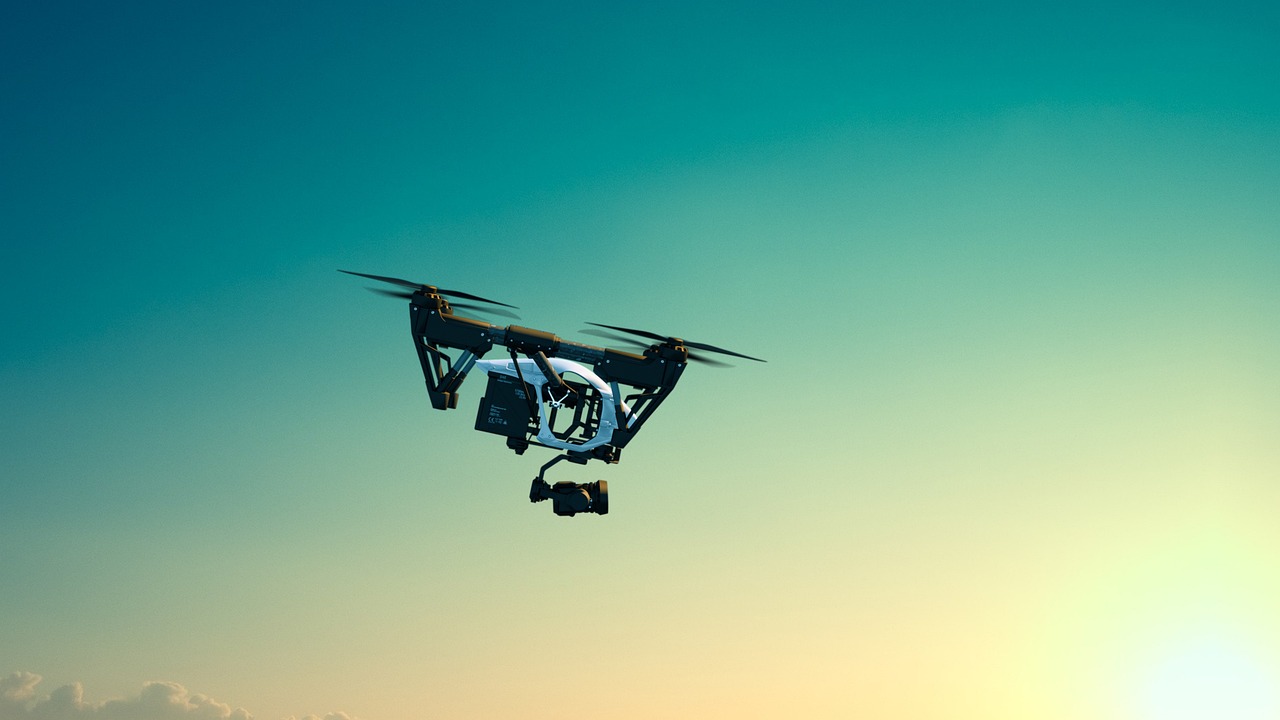
Operational Advantages of Drones
The incorporation of drones into military search and rescue operations has ushered in a new era of efficiency and effectiveness. These high-tech flying machines are not just a fancy gadget; they are game-changers that offer a multitude of operational advantages that can significantly enhance mission success and safety. Imagine being able to reach a remote area in a fraction of the time it would take a ground team, all while keeping personnel out of harm's way. This is the reality that drones bring to the table.
One of the most compelling benefits of utilizing drones is the reduction in risk to personnel. Traditional search and rescue missions often put soldiers in perilous situations, such as hostile environments or treacherous terrains. By deploying drones, military forces can gather vital information and perform reconnaissance without exposing their personnel to unnecessary danger. Drones can fly over areas that might be too risky for human teams, allowing for a safer operational approach.
Moreover, drones are equipped with advanced sensors and cameras that provide real-time data, enhancing situational awareness. This capability allows commanders to make informed decisions quickly, tailoring their strategies based on the most current information available. In a high-stakes situation, having the ability to see what’s happening on the ground can be the difference between life and death. It’s like having a bird’s-eye view of the battlefield, where every second counts.
Another advantage is the speed of response. In search and rescue scenarios, time is often of the essence. Drones can be deployed rapidly, reaching affected areas faster than traditional methods. This quick deployment can be crucial in saving lives, especially in emergencies where every minute matters. For instance, in natural disasters or combat zones, drones can assess the situation and relay critical information back to command centers almost instantaneously.
Furthermore, drones are capable of accessing hard-to-reach areas that might be impossible for ground vehicles or personnel to navigate. Whether it’s dense forests, rugged mountains, or urban environments with collapsed structures, drones can maneuver through these obstacles with ease. This ability to reach challenging locations not only broadens the scope of search and rescue operations but also ensures that no potential victims are left unattended.
To illustrate these advantages further, let’s look at a few key points:
- Reduced Personnel Risk: Drones allow operations to be conducted from a safe distance.
- Real-Time Data Collection: Enhanced situational awareness leads to better decision-making.
- Speedy Deployment: Drones can be launched quickly, ensuring rapid response.
- Access to Inaccessible Areas: Capable of navigating challenging terrains and environments.
In summary, the operational advantages of drones in military search and rescue missions are undeniable. They not only enhance the safety of personnel but also improve the overall effectiveness of operations. The combination of speed, accessibility, and real-time data collection makes drones an invaluable asset in the field. As technology continues to evolve, we can only expect these advantages to grow, further solidifying the role of drones in modern military operations.
Q: How do drones improve the safety of military personnel during search and rescue missions?
A: Drones minimize personnel exposure to dangerous environments, allowing for reconnaissance and data collection without putting lives at risk.
Q: What types of sensors are typically used in military drones?
A: Military drones often utilize high-resolution cameras, thermal imaging sensors, and LiDAR technology to gather comprehensive data during missions.
Q: Can drones operate in adverse weather conditions?
A: Yes, many military drones are designed to withstand various weather conditions, although extreme weather can still limit their operational capabilities.
Q: How quickly can drones be deployed for a mission?
A: Drones can be launched within minutes of a decision to deploy, making them a rapid response tool in critical situations.

Risk Reduction for Personnel
In the high-stakes world of military operations, the safety of personnel is paramount. Traditional search and rescue missions often place soldiers in perilous situations, exposing them to enemy fire, natural hazards, and unpredictable environments. However, the advent of autonomous drones has drastically changed the landscape of these operations, leading to a significant reduction in risk for military personnel.
By deploying drones, military forces can conduct search and rescue missions remotely, keeping personnel safely out of harm's way. Imagine sending a small, agile drone into a hostile area to gather intelligence or locate a downed pilot, all while the operators remain in a secure location miles away. This not only enhances the chances of mission success but also preserves the lives of those who would otherwise be directly involved in the operation.
Furthermore, drones equipped with advanced technology can assess dangerous situations before human personnel are deployed. For instance, they can utilize thermal imaging and high-resolution cameras to identify threats or obstacles in real-time. This capability allows commanders to make informed decisions about the safest approach to a rescue mission. By mitigating the exposure of soldiers to potential threats, drones act as a protective barrier, significantly enhancing safety.
Here are some key ways in which autonomous drones contribute to risk reduction:
- Remote Operation: Drones can be controlled from a distance, allowing operators to engage in missions without being physically present in dangerous environments.
- Real-Time Data Collection: Equipped with advanced sensors, drones provide instant feedback on the conditions of the area, enabling better planning and execution of rescue operations.
- Enhanced Surveillance: Drones can fly over hostile territory, gathering critical information without putting personnel at risk.
Moreover, the integration of drones into military operations not only protects personnel but also boosts overall mission efficiency. With the ability to cover vast areas quickly, drones can significantly reduce the time it takes to locate and extract individuals in distress. This rapid response is crucial, especially in time-sensitive situations where every second counts.
However, while drones offer numerous advantages, it’s important to recognize that they are not a foolproof solution. Potential challenges, such as technical malfunctions or the risk of enemy interception, still exist. To address these issues, military organizations are continually working on improving drone technology, ensuring that these tools remain effective and safe for personnel.
In conclusion, the use of autonomous drones in military search and rescue operations is a game changer. By reducing the risk to personnel, enhancing situational awareness, and streamlining mission execution, drones are revolutionizing how military forces approach rescue missions. The future looks bright, as ongoing advancements promise even greater safety and efficiency in the field.
- How do drones improve safety for military personnel? Drones allow operators to conduct missions remotely, minimizing the risk of exposure to dangerous environments.
- What technologies do drones use for search and rescue? Drones are equipped with thermal imaging, high-resolution cameras, and advanced sensors to gather real-time data.
- Can drones operate in hostile environments? Yes, drones are designed to navigate challenging terrains and can gather critical information without putting personnel at risk.

Case Studies of Successful Missions
When we talk about the impact of autonomous drones in military search and rescue operations, the stories that emerge from the field are nothing short of astounding. One notable case occurred during a joint military exercise in a rugged mountainous region. Traditional search methods were proving ineffective due to the challenging terrain and adverse weather conditions. However, the deployment of drones equipped with advanced imaging technology allowed teams to locate stranded soldiers within minutes. The drones, utilizing real-time thermal imaging, pinpointed heat signatures, guiding rescue teams directly to those in need. This mission not only showcased the drones' capabilities but also emphasized how they can drastically reduce the time it takes to save lives.
Another remarkable example took place during a natural disaster response. After a devastating earthquake, many victims were trapped under rubble in an urban environment. Ground teams struggled to navigate through the debris safely. In this scenario, drones equipped with LiDAR technology flew over the affected area, mapping out the structural integrity of buildings and identifying pockets of survivors. The data collected was invaluable, enabling rescue teams to prioritize their efforts and effectively allocate resources. This incident highlighted how drones can enhance operational efficiency and improve situational awareness in chaotic environments.
Furthermore, a recent military operation in a conflict zone demonstrated the drones' role in search and rescue missions. During a reconnaissance mission, a soldier was injured and unable to move. The team quickly deployed a drone equipped with a medical supply drop system. Within minutes, the drone delivered essential first aid supplies directly to the soldier while the ground team navigated through hostile territory. This operation illustrated the versatility of drones, showing that they can not only assist in locating individuals but also provide critical support in life-threatening situations.
These case studies exemplify the transformative potential of autonomous drones in military search and rescue missions. They not only enhance operational effectiveness but also save lives in ways that were previously unimaginable. As technology continues to evolve, we can expect even more innovative applications of drones in the field, ultimately reshaping the landscape of military operations.
- What types of drones are commonly used in search and rescue missions?
Various types of drones are utilized, including fixed-wing drones for long-range missions and quadcopters for closer, more detailed searches.
- How do drones improve response times in rescue operations?
Drones can quickly cover large areas and provide real-time data, allowing rescue teams to make informed decisions faster than traditional methods.
- Are there any limitations to using drones in military operations?
Yes, factors such as weather conditions, battery life, and regulatory restrictions can limit drone effectiveness in certain situations.
- What safety measures are in place to protect personnel during drone missions?
Safety protocols include thorough pre-mission planning, real-time monitoring, and the use of drones to assess hazardous environments before deploying personnel.
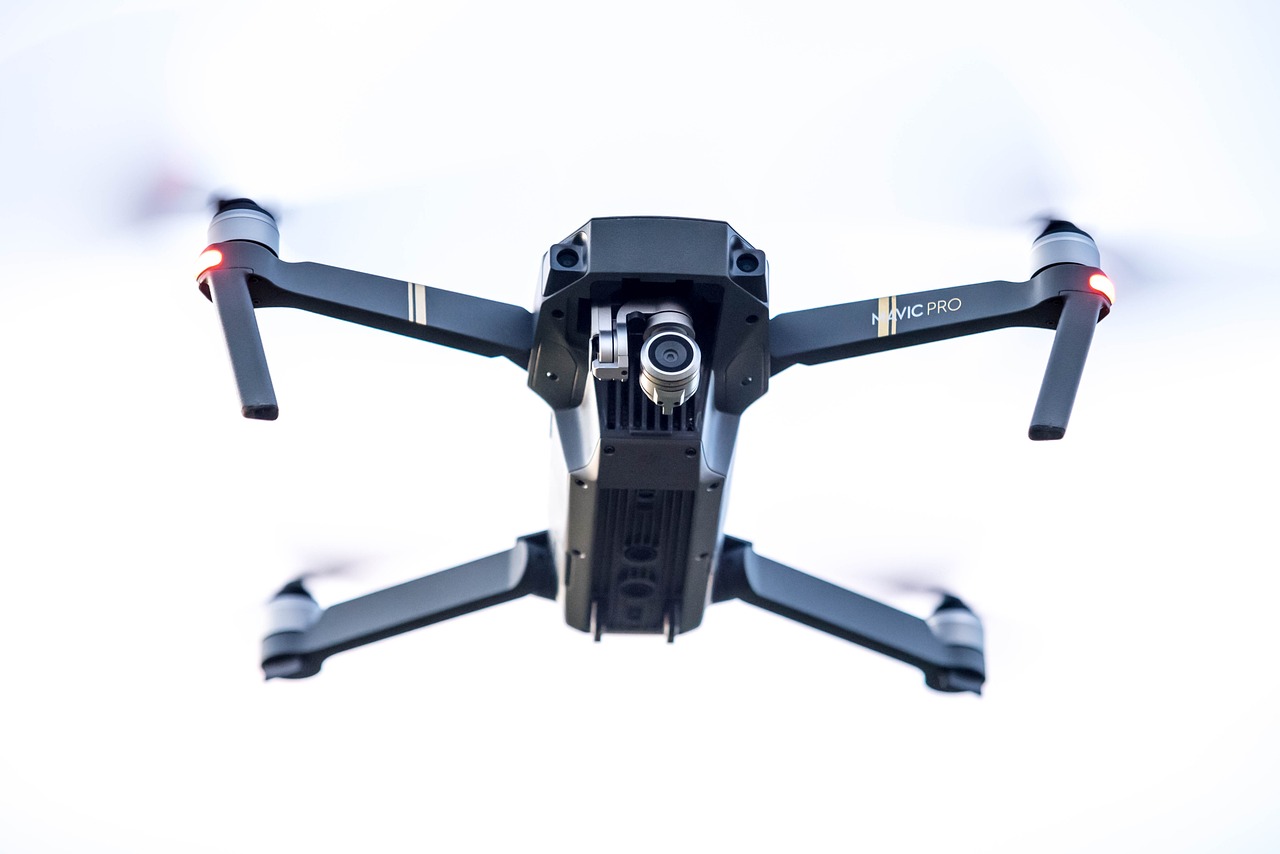
Challenges in Personnel Safety
While the integration of autonomous drones in military search and rescue missions offers remarkable advantages, it is essential to acknowledge the that accompany this technology. One of the most significant concerns is the potential for technology failure. Drones, like any piece of advanced machinery, can malfunction or face technical issues mid-mission. Imagine relying on a drone to locate a stranded soldier only for it to lose connection or crash due to a software glitch. Such scenarios can jeopardize not only the mission but also the lives of those who are already in peril.
Another challenge revolves around the unpredictability of the operational environment. Drones may encounter adverse weather conditions, such as high winds or heavy rain, which can affect their performance. For instance, a drone deployed in a mountainous region may struggle with GPS inaccuracies caused by signal interference from surrounding terrain. This unpredictability can lead to delays in rescue operations, putting personnel at greater risk.
Moreover, the human factor cannot be overlooked. While drones operate autonomously, they are still controlled and monitored by human operators. In high-stress situations, decision-making can be compromised. Operators may misinterpret data or fail to react promptly to changing conditions, which could lead to disastrous outcomes. In fact, a study conducted by the Military Technology Institute highlighted that operator fatigue and stress can significantly impair the effectiveness of drone missions, raising serious questions about personnel safety.
To mitigate these risks, military organizations are increasingly focusing on training and protocols that emphasize the importance of drone operator readiness. Regular training sessions can equip operators with the skills needed to handle unexpected situations. Additionally, implementing strict operational protocols can help ensure that drones are only deployed under optimal conditions. For example, drones should be grounded during severe weather alerts or when critical systems are reported as malfunctioning.
Furthermore, the development of redundancy systems within drones can enhance safety. These systems act as backups that can take over in case the primary systems fail. For instance, if a drone's navigation system fails, a secondary system can guide it back to a safe location. Incorporating such technology can significantly reduce the risks associated with drone missions.
In conclusion, while autonomous drones have the potential to revolutionize military search and rescue operations, it is crucial to address the challenges they present to personnel safety. By focusing on technology reliability, environmental adaptability, human factors, and robust training, military organizations can enhance the safety of their personnel while maximizing the benefits of drone technology.
- What are the main risks associated with using drones in military operations?
The main risks include technology failures, adverse weather conditions affecting performance, and human error in decision-making. - How can military organizations mitigate risks when using drones?
By implementing strict operational protocols, providing regular training for operators, and integrating redundancy systems within drones. - What role does operator training play in ensuring personnel safety?
Operator training is crucial as it equips personnel with the necessary skills to handle unexpected situations and make timely decisions during missions. - Can drones be used effectively in all weather conditions?
No, drones should not be deployed in severe weather conditions as it can impair their performance and increase risks to personnel safety.
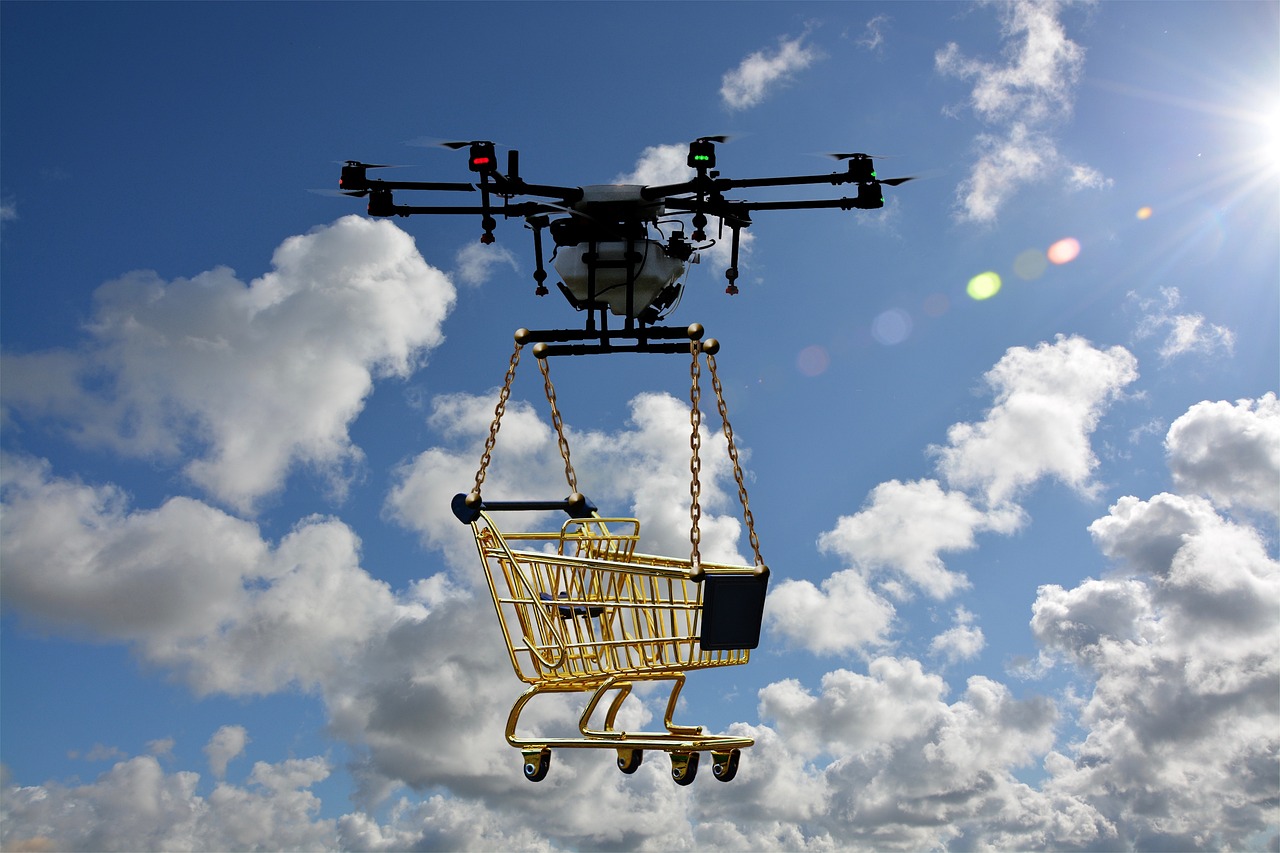
Enhanced Situational Awareness
In the realm of military operations, situational awareness is paramount. It’s like having a superpower that allows commanders and troops to perceive their environment, understand the dynamics at play, and make informed decisions swiftly. With the introduction of autonomous drones, this superpower has evolved to new heights. These drones are not just flying machines; they are equipped with advanced sensors and cutting-edge technology that enhance the ability to gather real-time data from the battlefield.
Imagine being in a complex military scenario where every second counts. Traditional reconnaissance methods might take time, but drones can swoop in and provide crucial information in a matter of minutes. They can scan vast areas, identify potential threats, and relay this information back to command centers instantly. This capability is invaluable, especially in high-stakes situations where the difference between success and failure can hinge on timely intelligence.
One of the most significant features of these drones is their sensor technology. Equipped with high-resolution cameras, thermal imaging, and even LIDAR systems, they can gather data during the day or night, and in various weather conditions. This versatility ensures that military operations can proceed without the usual limitations faced by ground troops or manned aircraft. For instance, during a search and rescue mission in a foggy terrain, a drone's thermal imaging can detect heat signatures, allowing rescuers to locate individuals who might otherwise be invisible to the naked eye.
Moreover, the integration of artificial intelligence (AI) into drone operations further amplifies situational awareness. AI algorithms can analyze data on the fly, identifying patterns and anomalies that human operators might miss. This means that drones can not only gather information but also interpret it, providing actionable insights that enhance decision-making processes. For example, if a drone detects unusual movements in a specific area, it can alert commanders to potential ambushes or enemy activity, allowing for preemptive measures to be taken.
Additionally, the ability to operate in swarm formations offers a new layer of situational awareness. Multiple drones can work together, covering larger areas and providing a comprehensive view of the battlefield. This collective intelligence allows military units to maintain a constant flow of information, ensuring that no critical detail goes unnoticed. The synergy created by drone swarms can be likened to a flock of birds, where each member contributes to the overall awareness of the group, making it harder for adversaries to hide or plan their moves.
However, while drones significantly enhance situational awareness, it’s essential to recognize the challenges that come with this technology. For instance, the data collected must be managed effectively to prevent information overload. Commanders need to filter through vast amounts of data to extract the most relevant insights. Additionally, the reliance on technology raises questions about cybersecurity; safeguarding the data collected by drones is critical to ensure that it does not fall into enemy hands.
In summary, the incorporation of autonomous drones into military operations has transformed the landscape of situational awareness. With their advanced sensors, AI capabilities, and swarm technology, these drones provide a level of insight that was previously unimaginable. As we look to the future, it is clear that enhancing situational awareness through drone technology will continue to play a pivotal role in the effectiveness and safety of military missions.
- How do drones improve situational awareness in military operations?
Drones enhance situational awareness by providing real-time data through advanced sensors, allowing for quick decision-making and threat identification. - What types of sensors are commonly used in military drones?
Military drones typically use high-resolution cameras, thermal imaging, and LIDAR systems to gather comprehensive data from the battlefield. - Can drones operate in adverse weather conditions?
Yes, many modern drones are designed to operate effectively in various weather conditions, including fog, rain, and darkness. - What role does AI play in drone operations?
AI enhances drone capabilities by enabling real-time data analysis, allowing drones to identify patterns and anomalies that can inform military strategies. - What are the challenges associated with using drones for situational awareness?
Challenges include managing large amounts of data, ensuring cybersecurity, and the potential for information overload for decision-makers.

Future Trends in Drone Technology
The future of autonomous drones in military operations is not just bright; it’s positively dazzling! As technology continues to advance at a breakneck pace, we can expect remarkable innovations that will redefine how search and rescue missions are conducted. Imagine drones that can not only fly but also think and adapt in real-time to changing conditions. This is not science fiction; it's the next frontier in military technology!
One of the most exciting trends we can anticipate is the advancement in artificial intelligence (AI). Drones equipped with sophisticated AI algorithms will be capable of analyzing vast amounts of data on-the-fly, allowing them to make informed decisions without human intervention. For instance, during a rescue mission, an AI-equipped drone could assess the terrain, identify potential hazards, and choose the safest path to reach stranded personnel. This autonomous decision-making capability could drastically reduce response times and enhance mission effectiveness.
Another key trend is the improvement in battery life and energy efficiency. Current drones have limitations when it comes to flight duration, often requiring frequent recharging or battery swaps. However, ongoing research is focused on developing longer-lasting batteries and alternative energy sources, such as solar power, which could extend the operational range of drones. Imagine a drone that can stay airborne for hours, covering more ground and searching for survivors in hard-to-reach areas without needing to land!
Moreover, the concept of drone swarms is gaining traction. Instead of deploying a single drone, military operations may soon utilize swarms of drones working collaboratively to cover larger areas more efficiently. These swarms could communicate with one another, share data, and coordinate their actions to optimize search patterns. Picture a flock of birds, each drone acting as an individual, yet together they create a formidable force that can quickly locate and assist those in distress.
Integration with other technologies will also play a critical role in the future of drone operations. For instance, the combination of drones with the Internet of Things (IoT) can lead to smarter operations. Drones could communicate with ground sensors, weather stations, and other military assets to gather real-time data, enhancing their operational capabilities. Imagine a scenario where a drone receives live updates about weather conditions or enemy movements, allowing it to adjust its mission parameters accordingly.
However, as we embrace these technological advancements, we must also consider the ethical implications of deploying autonomous drones in military settings. Questions surrounding accountability, decision-making in life-and-death situations, and the potential for misuse of technology are paramount. It's essential to establish clear guidelines and frameworks to ensure that these powerful tools are used responsibly and ethically.
- What are the main benefits of using drones in military search and rescue operations? Drones offer reduced risk to personnel, faster response times, and the ability to access difficult terrains.
- How does AI enhance drone capabilities? AI allows drones to analyze data in real-time, enabling them to make autonomous decisions during missions.
- What is drone swarm technology? It refers to the use of multiple drones working together to cover larger areas and improve operational efficiency.
- What ethical concerns are associated with military drones? Issues include accountability for actions taken by drones and the potential for misuse in combat scenarios.
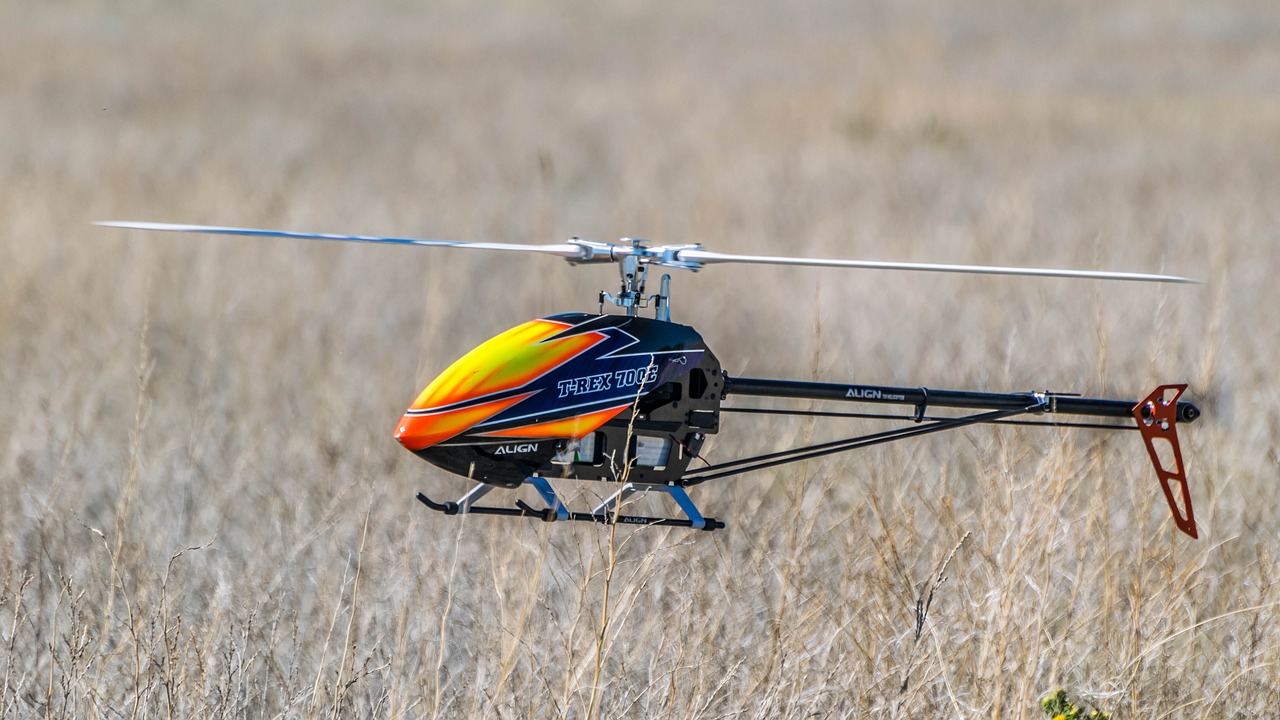
Integration with Other Technologies
The integration of autonomous drones with other advanced military technologies is a game-changer in search and rescue operations. Imagine drones not just flying solo but working in harmony with robotics and the Internet of Things (IoT). This synergy enhances the operational effectiveness of military missions, making them more efficient and precise. For instance, when drones are paired with ground robots, they can scout an area from the air while the robots navigate challenging terrains, providing a comprehensive situational overview. This collaboration allows for a more effective deployment of resources and personnel.
Furthermore, the incorporation of IoT technology allows drones to communicate in real-time with other military assets. This connectivity enables a seamless flow of information, ensuring that teams on the ground have access to vital data such as weather conditions, terrain maps, and even the location of wounded personnel. The real-time data exchange significantly boosts the decision-making process, allowing military operators to respond swiftly and accurately to dynamic situations.
Another fascinating aspect of this integration is the use of AI algorithms that can analyze data collected from various sources. For example, drones equipped with thermal imaging can detect heat signatures from injured soldiers, while AI can process this information to prioritize rescue efforts. This intelligent processing not only saves time but also maximizes the chances of successful rescues.
Moreover, as drones become more advanced, the potential for them to operate in swarm formations is on the horizon. Imagine a scenario where multiple drones work together, covering vast areas in a coordinated manner. Each drone could be tasked with a specific role, such as surveillance, communication relay, or even direct support for ground troops. This swarm technology could revolutionize how military operations are conducted, especially in search and rescue missions, as it allows for a more comprehensive search pattern and quicker response times.
In summary, the integration of autonomous drones with other technologies not only enhances their capabilities but also transforms military operations into a more efficient and safer endeavor. As these technologies continue to evolve, the potential for improved outcomes in search and rescue missions becomes increasingly promising. The collaboration of drones, robotics, and IoT is paving the way for a new era in military effectiveness.
- What are autonomous drones? Autonomous drones are unmanned aerial vehicles that can operate independently using advanced technologies like AI and sensors.
- How do drones enhance search and rescue operations? Drones improve efficiency by providing real-time data, reducing the risk to personnel, and accessing hard-to-reach areas.
- What technologies are integrated with drones? Drones can be integrated with robotics, IoT, and AI, enhancing their operational capabilities and effectiveness.
- What are the future trends for military drones? Future trends include advancements in AI, battery life, and the development of drone swarm technology.
- Are there ethical concerns regarding drone use in military operations? Yes, the use of drones raises ethical questions about decision-making, accountability, and the implications of autonomous actions in combat situations.
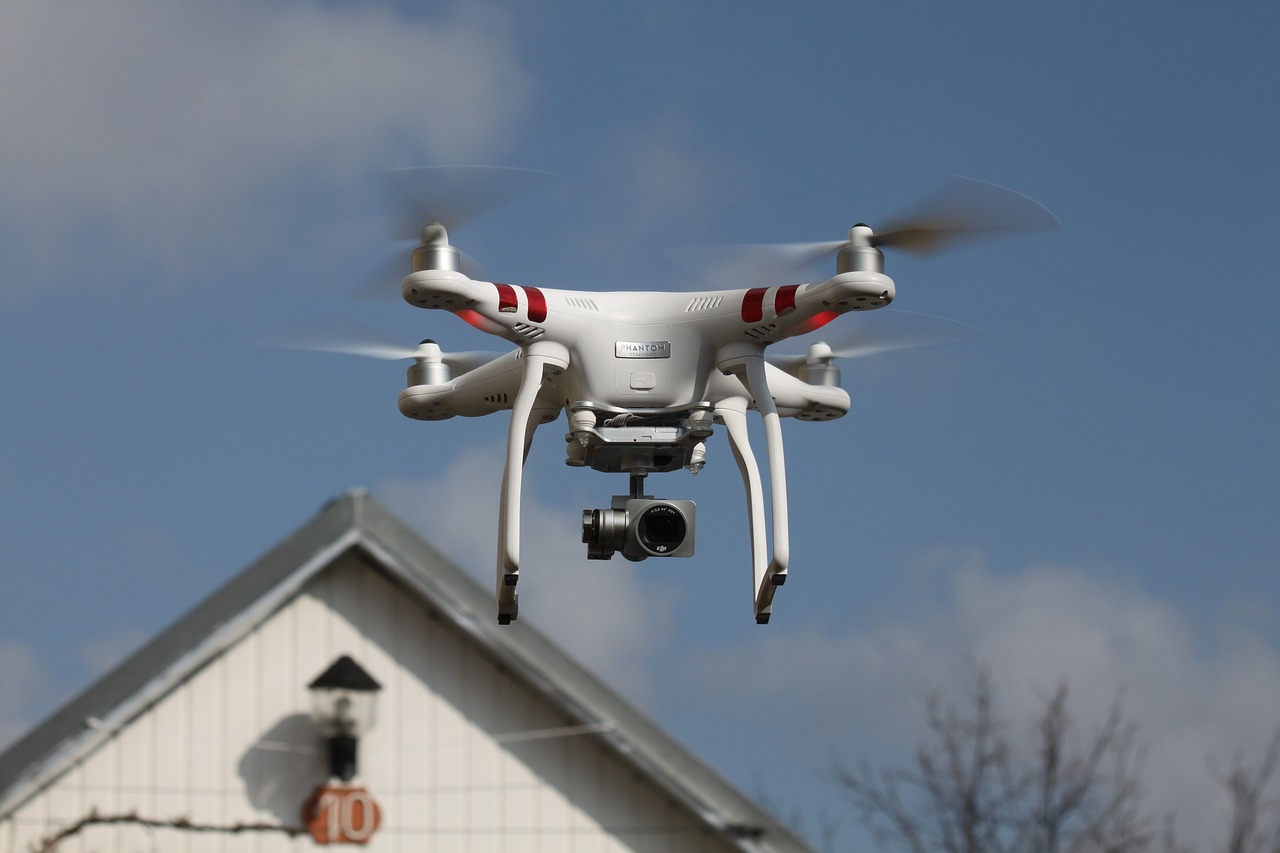
Ethical Considerations in Military Use
The deployment of autonomous drones in military operations brings forth a plethora of ethical considerations that cannot be overlooked. As these machines become more integrated into search and rescue missions, questions surrounding their decision-making capabilities, accountability, and the implications of their use arise. For instance, who is responsible when a drone makes a mistake? Is it the operator, the programmer, or the military institution itself? These are not merely academic questions; they have real-world implications that can affect lives and international relations.
One of the primary concerns is the autonomy of drones. As drones are equipped with artificial intelligence (AI), they gain the ability to make decisions without human intervention. This raises the question of moral agency. Can a machine, devoid of human emotions and ethical reasoning, be trusted to make life-and-death decisions? Imagine a scenario where a drone is tasked with rescuing a wounded soldier but encounters enemy combatants. Should it prioritize the rescue, potentially risking further lives, or should it engage the enemy? The complexity of such scenarios highlights the inadequacy of current ethical frameworks that govern military operations.
Moreover, the issue of accountability becomes even murkier with the use of autonomous drones. In traditional military operations, a clear chain of command exists; however, when AI is involved, determining liability can be challenging. If a drone fails to perform its intended task, or worse, causes unintended harm, pinpointing who is to blame can become a convoluted process. This uncertainty can lead to a lack of accountability, which poses a significant ethical dilemma. To illustrate this, consider the following table that outlines potential scenarios and accountability challenges:
| Scenario | Potential Outcome | Accountability Challenge |
|---|---|---|
| Drone misidentifies a target | Innocent casualties | Who is responsible for the error? |
| Drone fails to execute a rescue | Loss of life | Is it the operator, the AI, or the military? |
| Drone is hacked | Unauthorized actions taken | How to attribute responsibility? |
Additionally, the transparency of operations involving drones is another ethical concern. The secretive nature of military operations can lead to public distrust, especially when autonomous systems are involved. Citizens have a right to know how their safety is being managed and what measures are in place to prevent misuse of these technologies. The lack of transparency can exacerbate fears and lead to a societal backlash against military innovations.
Furthermore, there are implications for international law and warfare ethics. The use of drones in military operations must adhere to established rules of engagement and humanitarian laws. The potential for drones to operate in gray areas of legality raises questions about their use in conflicts. For example, if a drone is deployed in a conflict zone without clear authorization, it could be perceived as an act of aggression, leading to escalated tensions between nations.
In conclusion, while autonomous drones hold the promise of enhancing military operations, their deployment necessitates a thorough examination of the ethical implications involved. Addressing these concerns requires collaboration among military leaders, ethicists, lawmakers, and the public. Only through open dialogue and rigorous ethical scrutiny can we ensure that the benefits of these technologies are realized without compromising our moral standards.
- What are the main ethical concerns regarding the use of drones in military operations?
The primary concerns include decision-making autonomy, accountability, transparency, and compliance with international law. - How does AI impact the ethical considerations of drone usage?
AI can enable drones to make autonomous decisions, which complicates issues of moral agency and responsibility for actions taken. - What steps can be taken to address ethical dilemmas associated with drone deployment?
Open dialogue among military leaders, ethicists, and the public, along with robust regulatory frameworks, can help navigate these challenges.
Frequently Asked Questions
- What are autonomous search and rescue drones?
Autonomous search and rescue drones are advanced unmanned aerial vehicles designed to assist in locating and rescuing individuals in distress, especially in military operations. These drones utilize cutting-edge technology, including AI and sophisticated navigation systems, to operate independently and efficiently in challenging environments.
- How do drones enhance safety for military personnel during rescue missions?
Drones significantly reduce the risk to military personnel by taking over dangerous tasks in high-risk areas. Instead of sending soldiers into potentially life-threatening situations, drones can scout the area, assess threats, and even deliver supplies, all while keeping personnel safe from harm.
- What technological innovations are driving the effectiveness of drones in search and rescue operations?
Key innovations include the integration of artificial intelligence for better decision-making, enhanced navigation systems that allow for precise maneuvering in difficult terrains, and advanced sensors that provide real-time data on the environment. These technologies collectively improve the operational efficiency of drones in search and rescue missions.
- Can drones access hard-to-reach areas during missions?
Absolutely! One of the significant advantages of using drones is their ability to reach areas that might be inaccessible to traditional rescue teams. Whether it’s rugged mountains, dense forests, or disaster-stricken urban landscapes, drones can navigate these environments with ease, increasing the chances of successful rescues.
- What are some challenges associated with using drones in military operations?
While drones offer numerous benefits, they also face challenges such as potential technical failures, the need for skilled operators, and ethical concerns regarding their use in combat situations. Addressing these challenges is crucial to maximizing the effectiveness and safety of drone operations.
- How do drones improve situational awareness in military missions?
Drones equipped with high-resolution cameras and various sensors provide real-time surveillance data, allowing military teams to have a clearer picture of the operational environment. This enhanced situational awareness can lead to better decision-making and increased mission success rates.
- What future trends can we expect in drone technology for military operations?
The future of drone technology looks promising, with trends such as improved AI capabilities, longer battery life, and the development of drone swarms that can work together to accomplish complex tasks. These advancements will further enhance the effectiveness of drones in search and rescue missions.
- How are drones integrated with other military technologies?
Drones are increasingly being integrated with other technologies like robotics and the Internet of Things (IoT). This collaboration allows for more coordinated operations, sharing data across platforms to improve overall situational awareness and operational effectiveness during missions.
- What ethical considerations arise from the use of autonomous drones in military operations?
The use of autonomous drones raises important ethical questions regarding accountability and decision-making. As drones take on more responsibilities in military operations, it’s essential to consider who is responsible for their actions and how decisions are made, especially in life-and-death situations.


